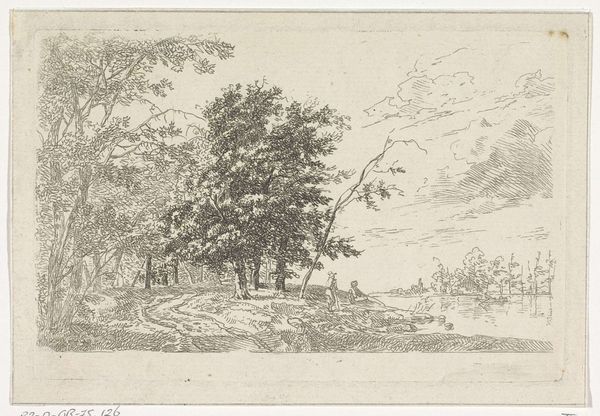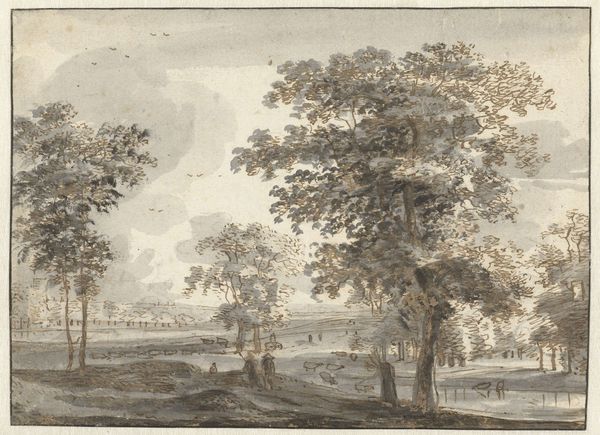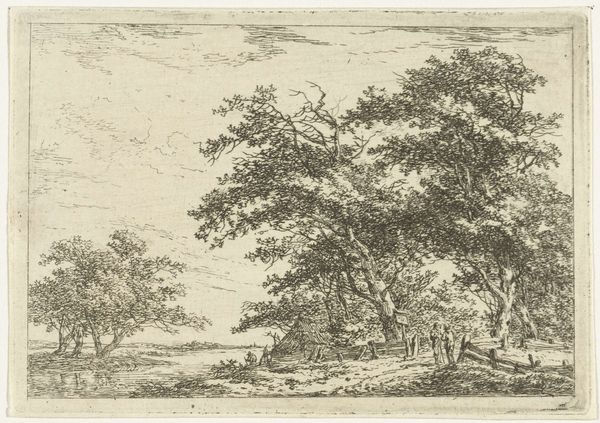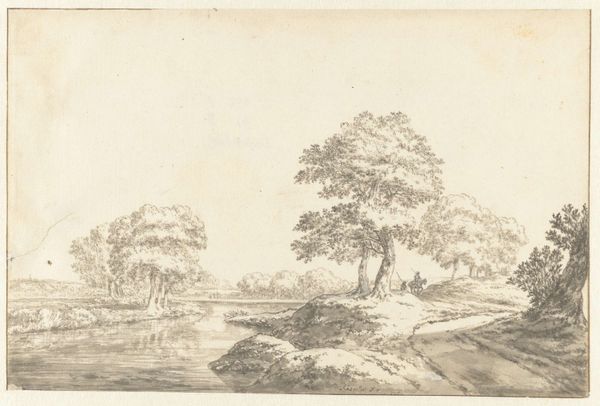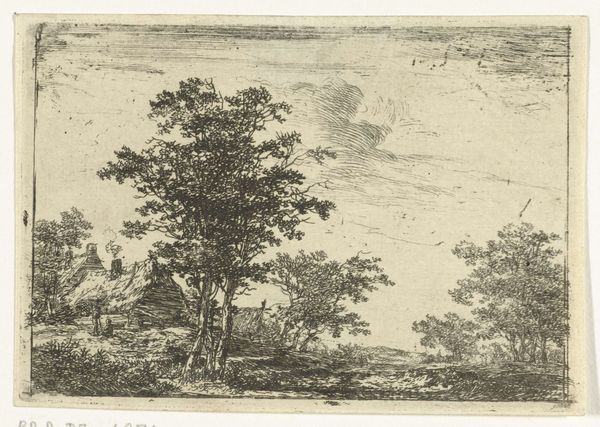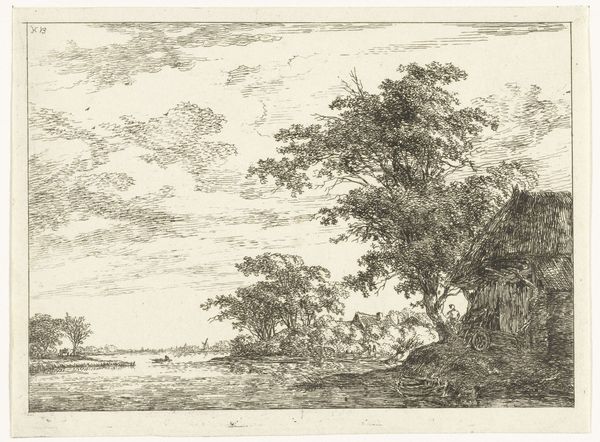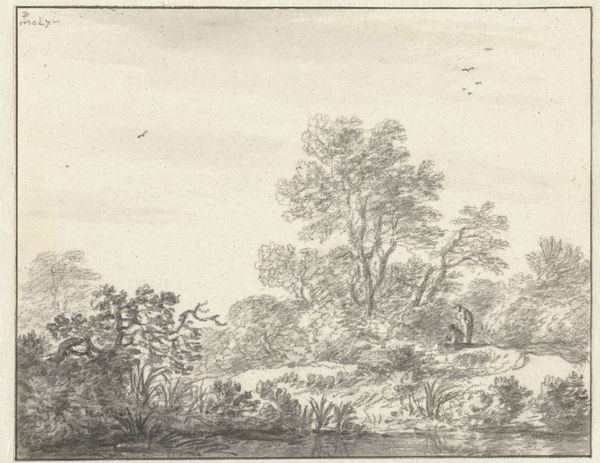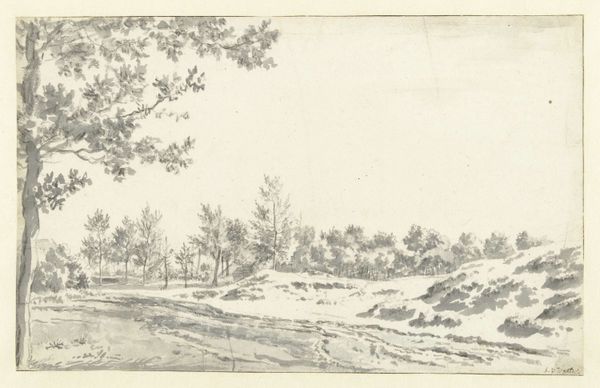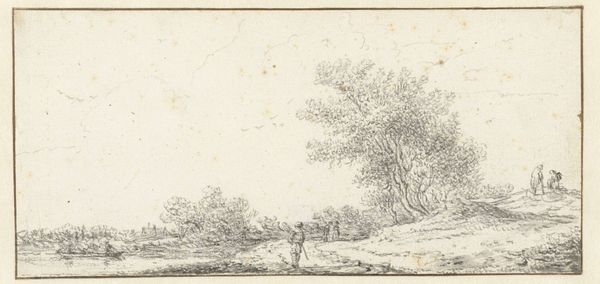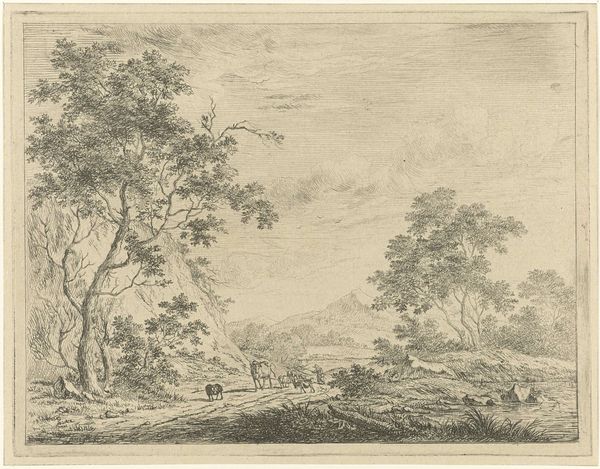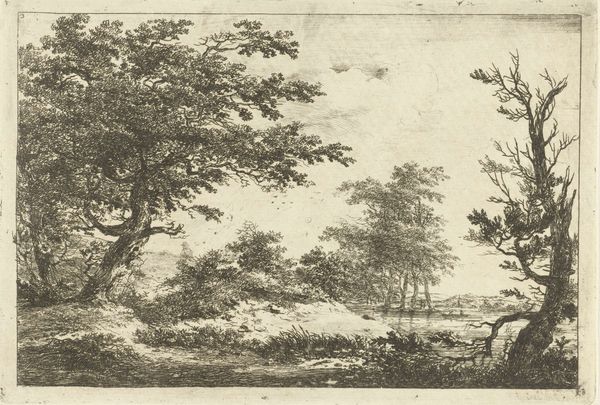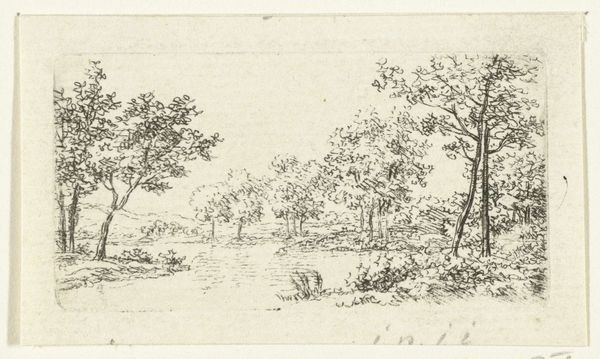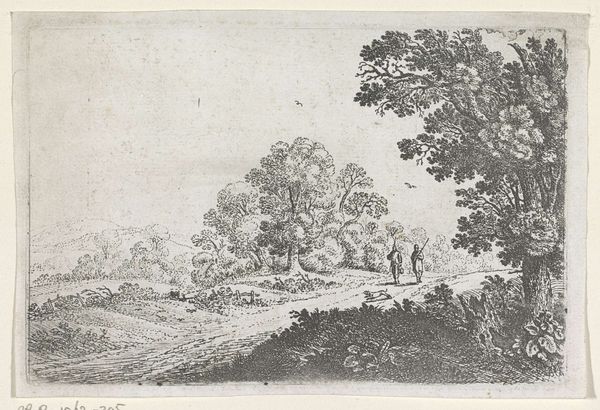
Dimensions: height 116 mm, width 186 mm
Copyright: Rijks Museum: Open Domain
Editor: So, here we have "Augustus," a landscape drawing from somewhere between 1754 and 1820 by Hermanus Numan. It’s ink on paper, and it has a sort of quiet, rural feeling to it. What strikes you about this piece? Curator: The immediate thing is the depiction of labour within a Romantic landscape. This isn't about sublime nature overpowering humans, but rather humans integrated into a working landscape. The artist used ink to portray a view where people are actually toiling away, involved in some form of harvesting, suggesting a social commentary on rural life, it also looks like their clothes may not be very fancy, so they most likely are lower class citizens. How does the medium—ink—play a role in our understanding of this piece? Editor: Hmm, I suppose because it's a drawing rather than, say, an oil painting, it feels more immediate and accessible. Like we're getting a glimpse into a real moment of working lives instead of an idealised version. Do you think that changes its message at all? Curator: Absolutely. Ink, being a readily available and relatively inexpensive material, connects this piece to a tradition of art production outside of elite circles. Think about the availability of paper and ink at the time— who had access to it? Did the choice of materials limit Numan’s choices? Perhaps even influenced the choice of his subjects. Editor: So you are saying Numan's work focuses on art created with accessible materials, in a specific period of time. In a way, focusing on those materials helps us interpret the social messages present within the landscape, and is a reflection of romantic values through the social structure lens, because it is something easily accessible that other people can see and emulate. Curator: Exactly. By emphasizing the processes and materiality involved in this drawing, we begin to see how even seemingly simple landscape drawings can reveal so much about the complex interplay between art, labour, and social standing. Editor: That is really interesting, I hadn't thought about it that way before! Thanks for your insight.
Comments
No comments
Be the first to comment and join the conversation on the ultimate creative platform.
